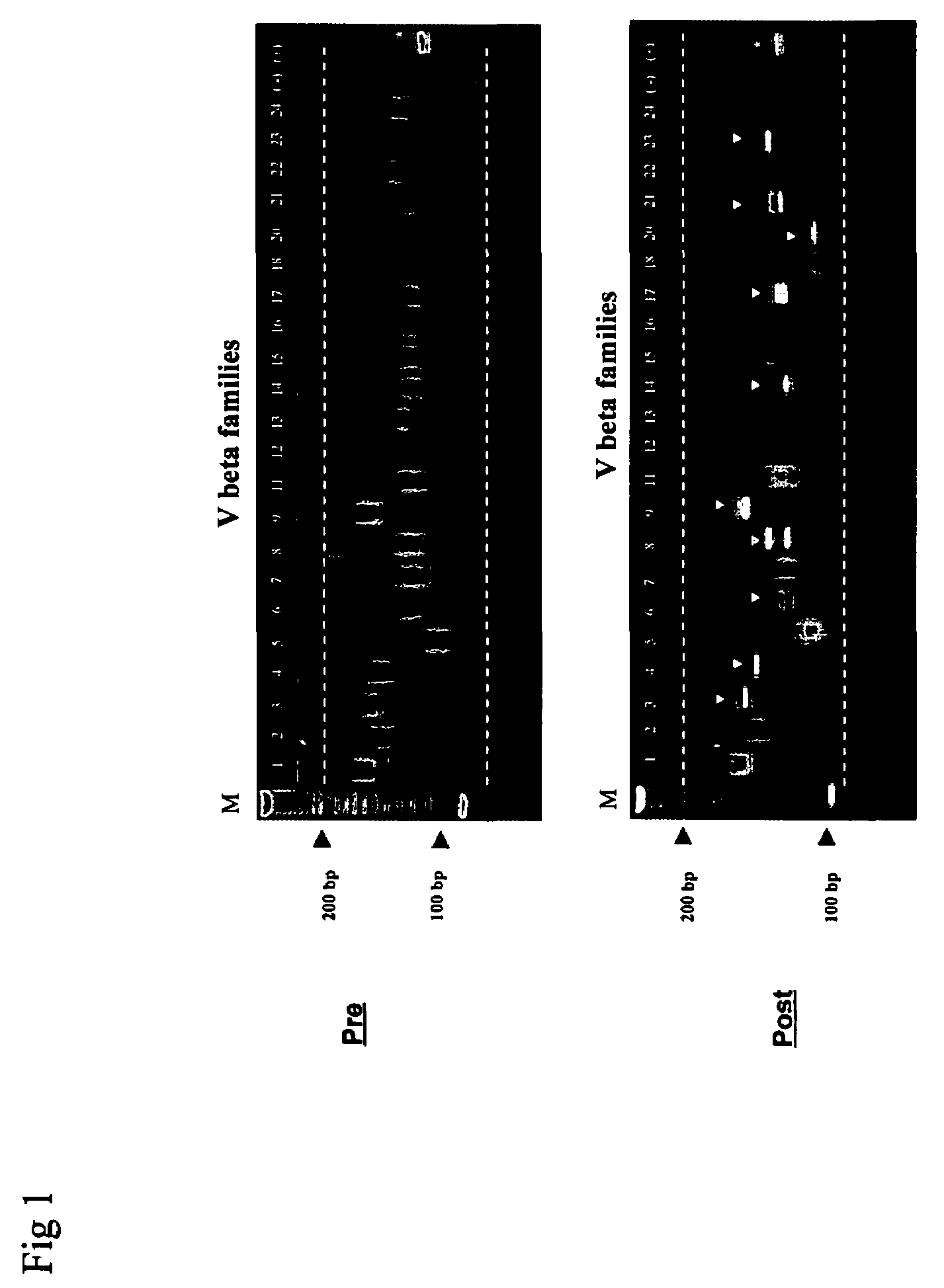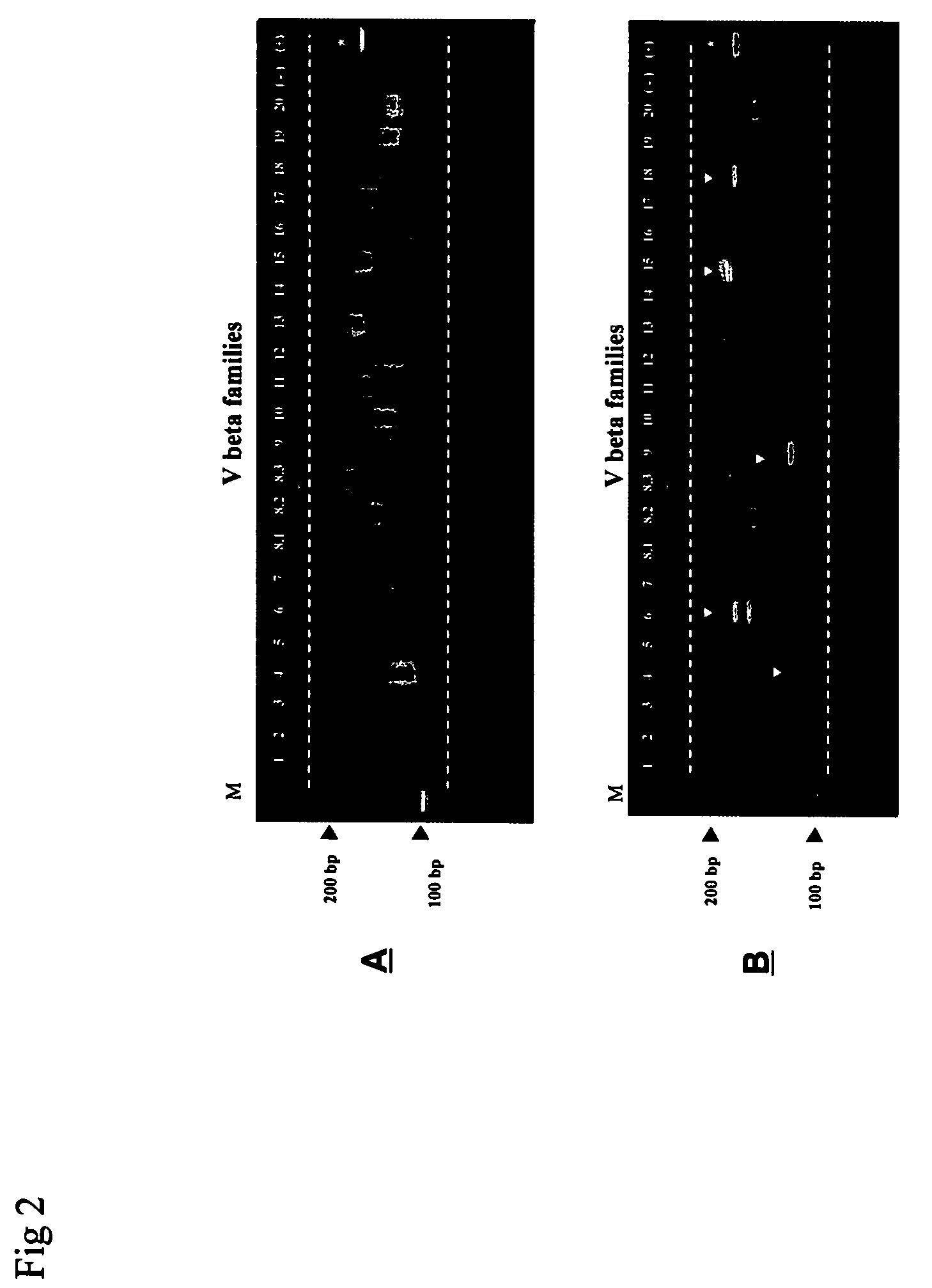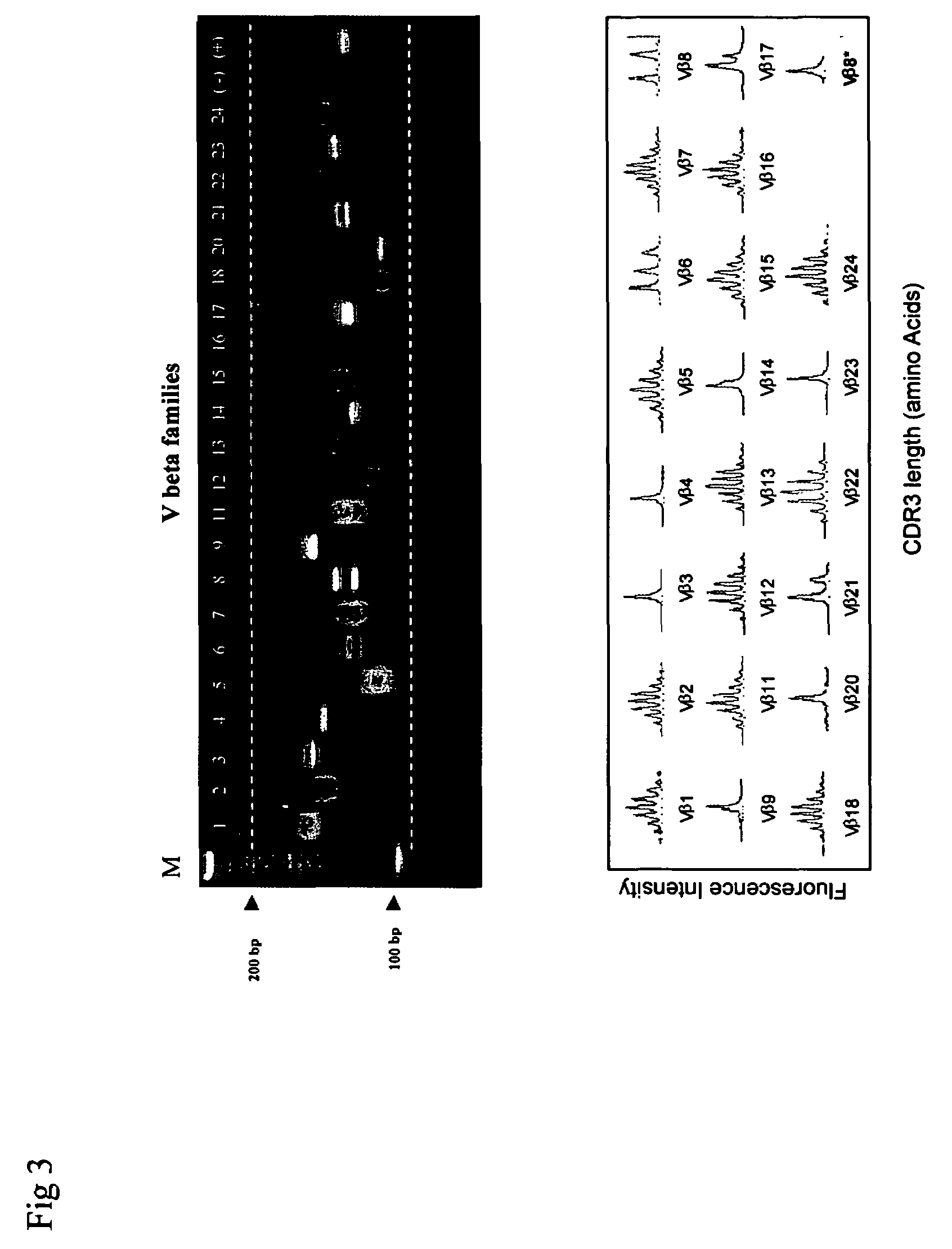Method for detection and quantification of T-cell receptor Vbeta repertoire
a t-cell receptor and repertoire technology, applied in the field of rapid detection and measurement of tcr repertoire clonality, can solve the problem of no method for quickly detecting tcr repertoire clonality, and achieve the effect of improving the sensitivity of pcr reaction
- Summary
- Abstract
- Description
- Claims
- Application Information
AI Technical Summary
Benefits of technology
Problems solved by technology
Method used
Image
Examples
example 1
TCR Vβ gene Clonality Determination in Vaccinated Subjects
[0070]This example illustrates a new clonality determination procedure for 22 Vβ families in a vaccinated human subject. Clonalities of the TCR V β repertories in CDR3 regions of 22 Vβ families were determined by two step PCR amplifications. cDNA from separated CD4 T-cell subsets served as primary PCR templates for the amplifications. The PCR products of the primary amplification served as templates for the nested PCR. Clonality of the TCR Vβ repertories was determined by separating the nested PCR products on high resolution gel. This example illustrates detection of clonalites of 22 TCR Vβ families in purified CD4 T-cells from a human subject prior to and following vaccination with HAV vaccine.
[0071]Separated cDNA from a pre-immunized human was amplified in 22 Vβ families and PCR products (98-196 bp) were separated using a high resolution agarose gel (FIG. 1). A DNA ladder (M) is shown in the first lane of FIG. 1. 22 Vβ fami...
example 2
Clonality of Vβ gene families in Treated and Untreated Mice
[0073]T-cell clonality detection in splenocytes from NOD mice was determined as in Example 1. In the untreated mouse, cDNA was amplified in 22 Vβ families and PCR products (105-189 bp) were separated using a high resolution agarose gel (FIG. 2, upper panel). A DNA ladder (M) is shown in the first lane. 22 Vβ families showed polyclonal smear bands, while a monoclonal repertoire from a mouse T-cell line used as a positive control clonally expressed Vβ1 gene family displayed a single clear band, as indicated with a star *. In a mouse treated with AAT, cDNA was amplified in 22 Vβ families and PCR products (105-189 bp) were separated using high resolution agarose gel (FIG. 2, lower panel). A DNA ladder (M) is shown in the first lane. Arrows indicate that the AAT treatment results in a selected T-cell immune response in the 22 Vβ families. Vβ4, 9 and 18 show a monoclonal repertoire and Vβ6 and 15 indicate an oligoclonal repertoire...
example 3
Comparison of Gene Sequencing and Gel-Based Detection
[0074]A GeneScan assay with an ABI 377 DNA sequencer was compared in the same samples with gel-based detection on the same samples. The results were virtually identical between the gel-based method (FIG. 3, upper panel) and the DNA sequencer-based assay (FIG. 3, lower panel). A single band TCR V β repertoire (upper panel) corresponded to a single peak in the lower panel (see Vβ3, 4, 14, 20, 23, and positive control). The simple DNA fragment set corresponded to the detected peak profile (see Vβ6, 8, 9, 17, 21). The multiple peaks (Gaussian distributions) corresponded to the smear DNA fragments (see Vβ2, 5, 7, 11, 12, 13, 15, 16, 18, 22, and 24).
PUM
| Property | Measurement | Unit |
|---|---|---|
| temperature | aaaaa | aaaaa |
| temperature | aaaaa | aaaaa |
| concentration | aaaaa | aaaaa |
Abstract
Description
Claims
Application Information
 Login to View More
Login to View More - R&D
- Intellectual Property
- Life Sciences
- Materials
- Tech Scout
- Unparalleled Data Quality
- Higher Quality Content
- 60% Fewer Hallucinations
Browse by: Latest US Patents, China's latest patents, Technical Efficacy Thesaurus, Application Domain, Technology Topic, Popular Technical Reports.
© 2025 PatSnap. All rights reserved.Legal|Privacy policy|Modern Slavery Act Transparency Statement|Sitemap|About US| Contact US: help@patsnap.com



